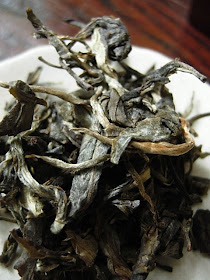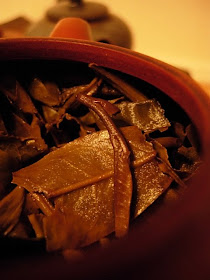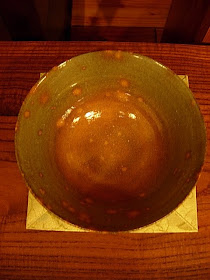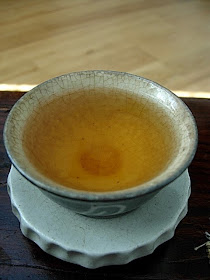

A cubic jar such as this could be used for a different purpose. Instead of energizing the tea, cubic jars subtly mellow the qi of the tea. This could be beneficial if you wish to age an especially rough, over-the-top tea. It could also create harmony on a circular surface.
This jar by master Kim Kyong Soo is beautifully crafted to mellow without exhausting the qi of the leaves within.


Its base is smaller than its top which acts to channel energy down. The wide pyrmid-shaped knob atop the lid also channels energy downward. The top of the jar where the lid rests has a defined ledge that holds the energy within.
If you look closely at the jar you will notice that each side is actually curved not straight. These curved lines create harmony within this piece and remove the harshness that could be created by hard lines. This smoothness prevents the harsh straight lines of this jar from depleting the qi of the tea that rests inside.
Beautiful work.
Peace














































